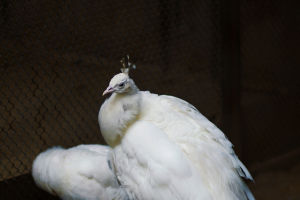The tiger is the largest feline in the world in terms of size.
Tigers are large, up to 1 meter tall at the shoulder, with a yellow-to-red gradient of fur with dark stripes.
Generally speaking, all tigers have longer fur in winter than in summer, and lighter body fur color and pattern.
Tigers not only have stripes on their fur but also on their skin. Like human fingerprints, no two tigers have the same stripes.
The tiger's limbs are strong, with the front limbs being more robust than the hind limbs.
Their tails are thick and long, with black rings around them, and the tip of the tail is usually black.
Apart from humans, tigers have no natural predators in nature. Tigers rarely attack humans, and the few that do are usually old and sickly, unable to catch their usual prey like other tigers.
Tigers are typically mountainous forest dwellers, often alone, with males and females living together only during the breeding season.
There are no fixed nests, and they roam around the forests in search of food.
They are diurnal and can live in places where there is a lot of vegetation and water. They like to urinate, scratch and grind tree trunks, and defecate to draw a clear line.
Tigers don't like hot weather because they lack sweat glands, so when summer comes they always look for shade to hide.
The difference between tigers and other cats is that they love water and are good swimmers.
Because of their excellent swimming skills, tigers in hot areas especially enjoy bathing and playing in pools of water.
However, their tree-climbing skills are far less than their swimming skills, which is probably due to their size and weight.
Tigers have strong teeth and retractable claws. They are fierce, swift, and decisive when hunting, using the least amount of energy to obtain the largest possible harvest.
When hunting fierce animals, they will never strike without sufficient certainty.
The tiger has thick flesh pads on its feet, which makes very little noise when it is in action, and is alert and stealthy. When it walks on the snow, its hind feet can accurately step on the tracks of its front feet.
When a tiger encounters prey, it will crouch down and look for cover, slowly sneak up and wait until the prey is within striking distance, then suddenly leap out and attack the back, this is to avoid being injured by the prey's resistance.
The tiger will first claw through the prey's back and drag it to the ground, then use its sharp canine teeth to bite down on its throat to suffocate it until it dies. This is also the most typical method of attack for felines.
Tigers usually prey on large mammals, including various wild deer, wild sheep, horse deer, water deer, roe deer, muntjac, and other hoofed animals, and occasionally wild birds, as well as berries and large insects in autumn.
The tiger is known as the king of the jungle because of its strong body and fierce hunting style.


